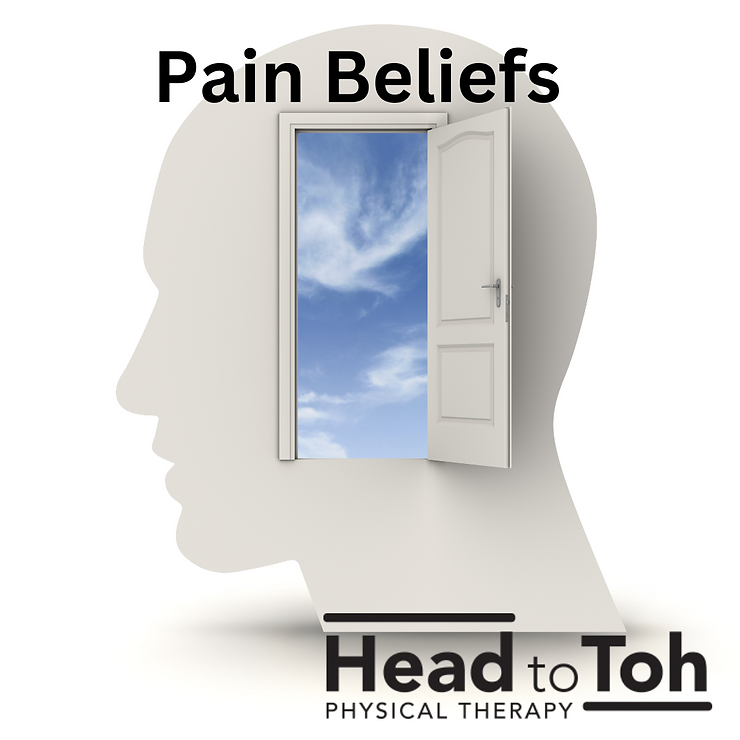

Are you having pain that just will not go away and you cannot figure out why? Have you tried many things and just can’t seem to get a hold of it? I might be able to help.
How Physical Therapy Can Help With Chronic Pain
Over my 6 years as a physical therapist, I have encountered many patients who suffer from chronic or persistent pain. They have had surgeries, medications, therapies, chiropractic, CBD etc and nothing seems to work. It is a tough thing to address as a healthcare provider, and I am sure even tougher for the person living with it. I am passionate about helping these individuals, and a lot of their work starts with a conversation and understanding about what pain is and how it works.
So what is pain? In the simplest terms, pain is perception. More specifically it is perception of threat. I know this sounds a bit radical, but allow me to explain. There is a multitude of research in the field called “pain science” that explains how this is the case. Contrary to popular belief, pain is NOT something that just happens to you. Pain is in fact a decision that your brain makes whenever it receives any sort of input, and decides that the input is a threat to your body. It is an alarm to signal you of danger, so you can take appropriate action to protect yourself from further harm.
When the pain alarm system is functioning as it should, it sends alarm signals when there are legitimate threats that need attended to. However when the system becomes overly sensitive or sensitized, it starts to send alarms when there is no real danger or threat. This explains why many people continue to experience pain long after a tissue injury has healed, or why people experience “phantom limb pain” in a limb that does not exist, or why some people don’t experience any pain at all under circumstances where a great amount of tissue damage has clearly occurred. Pain is not something you receive, it is something that you perceive. And the underlying issue with chronic pain, is that the brain is constantly perceiving false threats and in turn putting off false alarms.
So what information does your brain use in its process of deciding whether or not something is a threat? There are many factors but a few big ones include: your past experiences, your beliefs about your body, your beliefs about the potential harm a injury or specific movement can cause, your underlying stress and cortisol levels, the value of the health of a certain body part to your livelihood, and your belief in whether or not certain medical treatments do or do not work. There is a great story that illustrates this point.
During World War II, there was a physician named Dr, Henry Beecher who was responsible for caring for wounded soldiers. One day he was going around offering pain medication to these soldiers, and he found that many of them were declining pain medication. He was puzzled due to the severity of many of the injures, and initially thought that maybe they were worried there was not enough for their comrades, so he assured them that there was enough. Still, they all did not want any. And after taking some time to reflect on it, he began to realize what was happening. Because at that time there was no end in sight for the war, these soldiers knew that there was 2 ways out of the war; death or being wounded. And they got the lucky ticket of a wound that would allow them to go back home to their families and normal lives. Thus the gunshot wounds and various injuries they suffered did not pose any sort of threat to them but were in fact were the opposite. Their injuries were the best thing that could have happened to them, thus their brains did not process any threat and they did not feel pain. Dr. Beecher was one of the early doctors and scientists to study pain science as well as the placebo effect.
So the natural question then becomes, what can we do about chronic pain, if it is all perception? Often times, referral to a mental health professional and further guidance on dietary modification can be very necessary in managing chronic pain. But I will address what I as a Physical Therapist can do about it. Our subconscious beliefs and perceptions run deep in many layers. So it can take a lot of creativity, conscious effort, and patience to do. But the essence of treatment with individuals suffering from chronic pain is 3 things.
1. Education on pain science
2. Identifying and temporarily avoiding triggers
3. Desensitizing the nervous system via graded exposure to pain free movement.
My goal with individuals is to empower them via education about their bodies and their pain experience and give them tools to gradually decrease pain and improve their movement tolerance. This might sound wild, but physical therapy is essentially rewiring your brain and nerves via specifically prescribed and carefully progressed movements.
Are you having pain that won’t go away? Call me to schedule a free 20 minute discovery visit to talk about how I might be able to help you.
